5 Things Every Great Workbench Has
There are many staples of a DIY shop or garage, but the workbench stands above the rest. Having a work surface that is not the floor can make working on projects safer, more efficient, and more enjoyable. Sadly, just because benches are ubiquitous does not mean each one is good.
Like so many other things in life, a workbench must balance budget, function, appearance, and specialization. While we can’t help you with the last one on that list, we can get you to a great starting point by calling out some of the attributes that every good workbench will have. Whether you are building a new one or checking up on one that you’ve been using for years, here are five characteristics every great workbench needs.
A Flat (ish) Surface

You don’t need to rebuild a carburetor on a certified granite slab, but you do want a surface that can be clean and smooth while not allowing parts to roll away. You’ll often need to level your bench using shims or some other method, because garage floors are not typically very even—occasionally, on purpose.
Dozens of materials can be appropriate for bench tops, so be sure to take a deep look at what kinds of projects you think you’ll tackle and choose a material that can take the amount of weight you need it to and that won’t deform during use. Butcher’s block surfaces have been great to me, though there are a few sections of my bench that have some serious dents from hammer blows or heavy parts.
Height
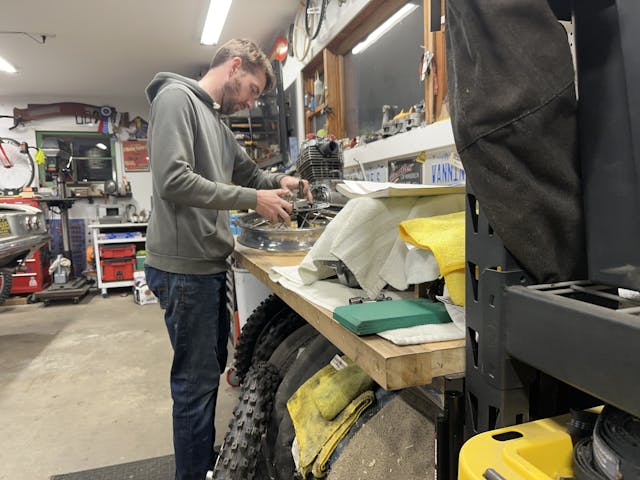
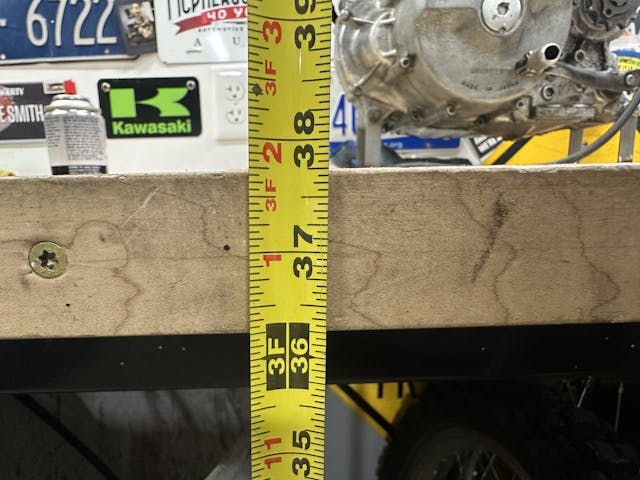
It might be tempting to plan your workbench around the height of a kitchen countertop (36 inches is standard), but be careful: Most kitchen tasks are less precise than most DIY projects, and food prep and cooking don’t require leverage or a large range of movement, like garage work often does. A lower work surface height is more tolerable in a kitchen, the arrangement of which needs to be somewhat standardized. Your workspace has no such constraints. Set your bench at a comfortable height for you and the work you do. That might even mean two benches at two different heights: parts cleaning is best done at a lower bench, while carburetor rebuilding is best done at a higher one, so that it’s easier to see.
Heft
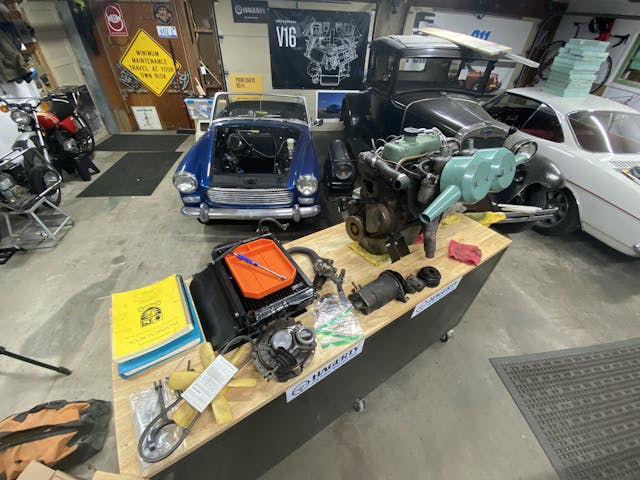
A flimsy bench makes work difficult in a number of ways. If you’ve got a component plopped on top of your workbench and every time you move it or shift something for access, the whole bench moves, you won’t feel confident in the work you’re doing.
Again, be careful: You can have too much of a good thing. Nice and sturdy does not require using 6×6-inch steel tubing for legs and 1/2-inch plate for the top. There’s a place for a bench like that in a welding shop, but in most home shops, it would be more annoying than helpful.
A Solid Vise
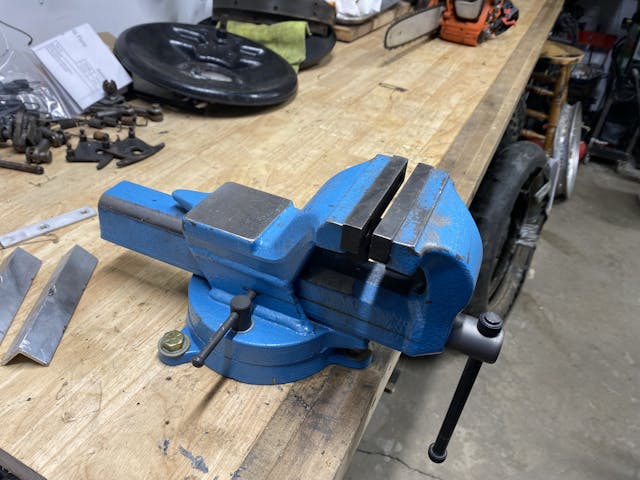
The third hand we always seem to need, a vise is a necessity for any shop for many reasons. It can be a anvil, a press, or an anchor that can help projects big and small in a multitude of ways. Don’t believe me? Try and work without one for a while.
Like the other characteristics listed here, consider your specific needs and choose accordingly. Do we all need Wilton Bullets? No, but most people would be better served with one than with an import vise whose jaws don’t line up evenly and have a ton of slop. If you’re on a budget, consider buying an old vise to restore. It’s a fun project, and we can honestly say that cast metals aren’t what they once used to be.
Sturdiness

When wrenching on something, it’s nice to have a workbench that doesn’t move an inch to the left when trying to loosen something and an inch to the right when tightening something. Especially if you are not planning to bolt the bench to a wall or other structure in your garage, consider using an under-bench shelf for storage: It will add a nice, low weight and improve stability.
Bonus: Wheels
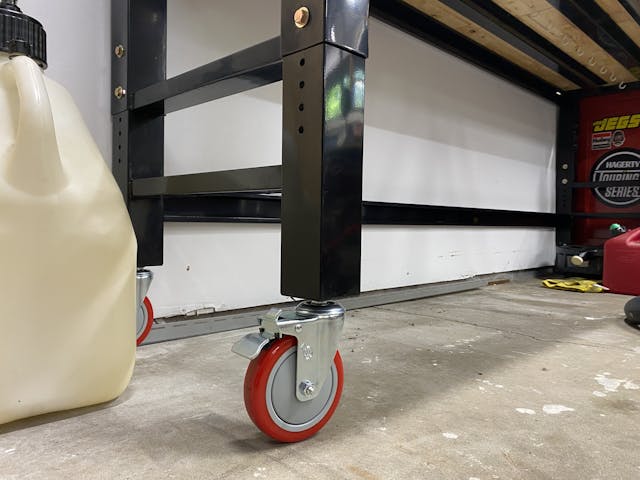
I’ve said it before and will say it again: The ability to bring your tools and workspace to your project is a superpower. Buy a good set of double-locking casters, put them on your bench, and suddendly it is a tool that goes places with you. The other side of the shop? Easy. The driveway? No problem. Putting multiple benches together to create super bench? Also an option! Use this power wisely.
No matter what, having a workbench is better than not having one. If you are looking to maximize your workspace and haven’t assessed whether your workbench is working for or against you, now is the time.
***
Check out the Hagerty Media homepage so you don’t miss a single story, or better yet, bookmark it. To get our best stories delivered right to your inbox, subscribe to our newsletters.
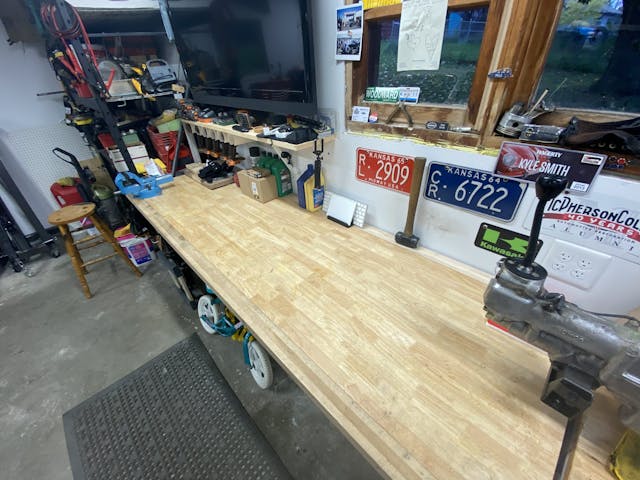

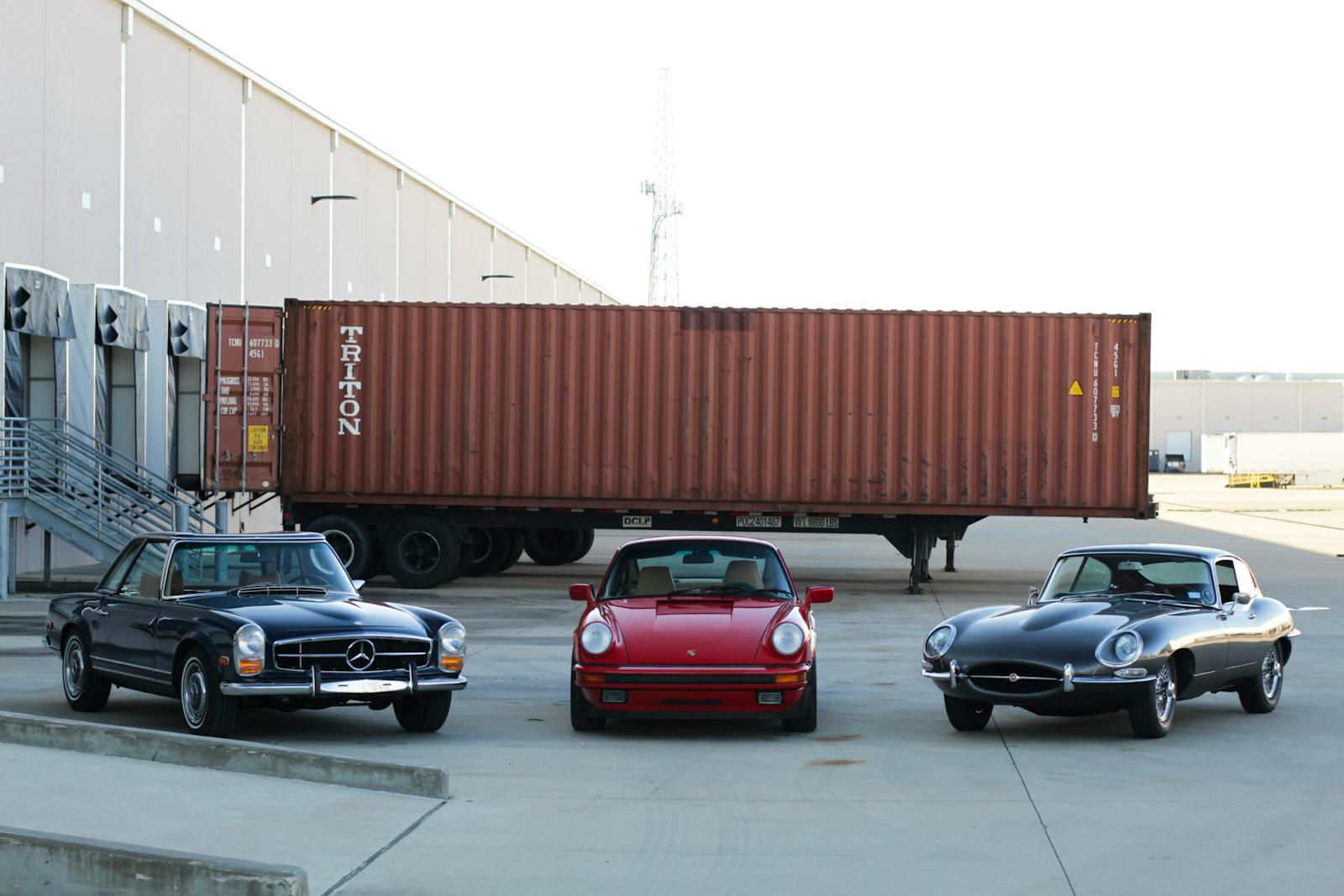
The vise appears to be mounted incorrectly on the bench. There are usually three mounting “lugs” on the base of the vise and one is bolted to the bench under the tail of the vise. Then the other two (120 deg apart) can be located close to the edge of the bench but not so close that you can’t drop a flat part in front of the fixed jaw and clamp it in place.
The wheels; everything in my smallish but personal shop is on rollers, pretty important when space is at a premium, and… you’re old! Steel tops only, besides on low-boy frame that has a removable plywood lid for doing bodywork; one is 1/2-in. steel, which is like the biggest anvil dolly on earth. Vises on two, one with medium sized sheet metal brake. I also drill mine for bolt-on vices, clamps, etc. as I work alone.
Did anyone mention storage? I built soffit shelves, even over the tip-up double garage door, which can hold myriad projects and materials; the space from the ceiling (rafters, in my case) down about 1-1/2-ft. is useless without these. Even my ‘haven’ shop/office has open soffit shelves around all four sides; about 500-lb. of classic car mags occupy those (clear back to the ‘fifties) and they’re packed full. They make a great rack, underneath, for my collection of old helmets and hats, and two antique muskets. A drawing table, architect’s drawer cabinet, file cabinets (old auto literature, and archived writing mss., mostly), a Lucigraph, dry-mount press, paper cutter, and stacks of projects also. Grandpa’s sanctuary, that’s me. Oh, and the autographed pics of Phil Hill and Smokey Yunick, oc. Wick
The only thing I have on wheels is a combination welding cart/table (what better way to get the hang of welding than building your own?) with a cheap vise mounted to it, that acts as my portable work area, but at 28×18, it’s small enough to wheel around. As for the cheap vise, I couldn’t bring myself to mount a nice restored vise in a welding area (the vintage restored one is on my main bench).